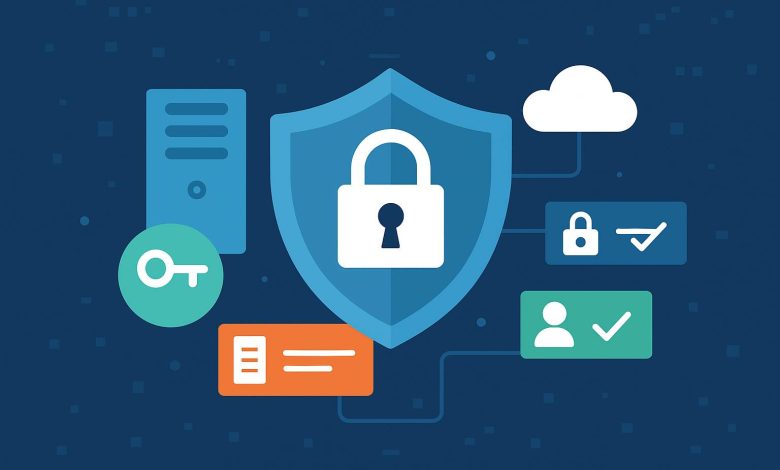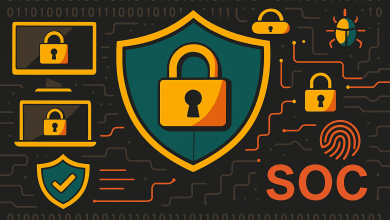
Introduction
Data has become the most valuable asset for modern organizations, but it is also the most targeted. Traditional perimeter-based security approaches are no longer enough, as sensitive data can reside in cloud platforms, on mobile devices, and across global networks. A data-centric security strategy ensures that protections are applied directly to the data itself, regardless of where it resides or how it moves. This article explores the principles of data-centric security and how organizations can secure data at rest, in transit, and in use.
What Is Data-Centric Security?
Data-centric security shifts the focus from infrastructure and applications to the data itself. Instead of assuming that securing the network or endpoints will inherently secure the data, this approach embeds protections such as encryption, access controls, and monitoring into the data lifecycle. This philosophy aligns with the zero-trust model, which assumes that no environment or actor is inherently trustworthy.
Protecting Data at Rest
Encryption and Tokenization
For data stored on servers, cloud storage, or endpoints, encryption is the foundational protection. Strong algorithms like AES-256 ensure that even if attackers gain access to the storage system, the data remains unreadable without the keys. Tokenization replaces sensitive elements—like credit card numbers—with non-sensitive substitutes, reducing exposure risk.
Access Controls and Key Management
Data at rest must be paired with strong access management policies. Role-based access control (RBAC) and attribute-based access control (ABAC) help ensure that only authorized users can view or manipulate sensitive data. Robust key management—whether hardware security modules (HSMs) or cloud key management services—prevents unauthorized decryption.
Monitoring and Auditing
Security doesn’t end with encryption. Monitoring access logs, applying anomaly detection, and auditing data usage patterns are critical. These controls help organizations identify insider threats and suspicious behavior before they escalate into breaches.
Protecting Data in Transit
Secure Protocols
Data moving across networks is vulnerable to eavesdropping, man-in-the-middle attacks, and interception. Protocols like TLS 1.3, HTTPS, and secure APIs ensure that information is encrypted while in motion. Organizations should phase out outdated protocols like SSL and early TLS versions.
VPNs and Zero Trust Network Access
Virtual Private Networks (VPNs) have long been used to create encrypted tunnels for data in transit. However, modern practices are moving toward Zero Trust Network Access (ZTNA), which authenticates and authorizes users continuously rather than assuming trust once access is granted.
Data Integrity and Authentication
Beyond encryption, verifying the integrity of transmitted data is essential. Digital signatures, certificates, and cryptographic hash functions ensure that data has not been tampered with. Multi-factor authentication (MFA) strengthens security when users initiate transmissions.
Protecting Data in Use
Confidential Computing
Protecting data while it is actively processed is one of the most difficult challenges. Confidential computing leverages secure enclaves—isolated hardware environments—that keep data encrypted even while applications are using it. This prevents unauthorized access by cloud providers, system administrators, or malware.
Data Masking and Homomorphic Encryption
Data masking hides sensitive fields during processing, allowing applications and developers to work with realistic but anonymized values. Homomorphic encryption, still emerging, allows computations to be performed on encrypted data without ever decrypting it—adding a powerful layer of privacy.
Access Policies and Runtime Controls
Runtime data access should follow the principle of least privilege. Just-in-time access controls and continuous monitoring help ensure that sensitive data is only accessible during approved use cases, reducing exposure windows.
Benefits of a Data-Centric Security Model
- Persistent Protection: Security travels with the data rather than being tied to a specific network or device.
- Regulatory Compliance: Many frameworks (GDPR, HIPAA, PCI DSS) emphasize strong data protections, which align with this approach.
- Resilience Against Breaches: Even if attackers bypass perimeter defenses, data-centric protections can render stolen data useless.
- Flexibility for Cloud and Hybrid Environments: As organizations adopt multi-cloud strategies, securing the data itself ensures consistency across environments.
Challenges and Considerations
Complexity of Implementation
Applying encryption, tokenization, and advanced runtime protections can be technically complex and resource intensive. Organizations must balance strong protections with performance.
Key Management and Lifecycle Controls
Keys are the backbone of encryption. Poor key management—such as storing keys alongside the data—can undermine protections entirely. Key rotation, secure storage, and strict access policies are essential.
Insider Threats
Even with robust encryption, insiders with legitimate access can misuse data. Behavioral analytics and continuous monitoring are crucial to mitigate this risk.
Emerging Threats
As new technologies evolve, so do attack methods. Side-channel attacks, quantum computing, and adversarial AI are future challenges for data-centric security models. Organizations must prepare with adaptive strategies and ongoing risk assessments.
Best Practices for Data-Centric Security
- Adopt a Zero-Trust Mindset: Assume every request to access data must be verified, regardless of origin.
- Classify and Prioritize Data: Not all data requires the same level of protection; prioritize based on sensitivity and regulatory requirements.
- Use Layered Defenses: Combine encryption, access controls, monitoring, and runtime protections for defense-in-depth.
- Regularly Audit and Test: Conduct penetration testing, red-teaming, and compliance audits to ensure security controls remain effective.
- Plan for the Future: Prepare for emerging threats, including quantum-resistant encryption and AI-driven anomaly detection.
The Future of Data-Centric Security
The rise of confidential computing, privacy-preserving AI, and quantum-safe cryptography will transform how data is secured. Organizations are likely to adopt policy-driven automation, where AI and machine learning enforce security rules dynamically. As regulatory frameworks evolve, businesses will need to demonstrate not only compliance but also data ethics—ensuring responsible handling of personal and sensitive information.
Conclusion
Data-centric security represents a necessary evolution in the fight against cyber threats. By focusing on securing data at rest, in transit, and in use, organizations can ensure that protections remain intact even when traditional perimeters are breached. The path forward requires not only technical measures like encryption and confidential computing but also cultural and organizational commitment to treating data as the core of security.



